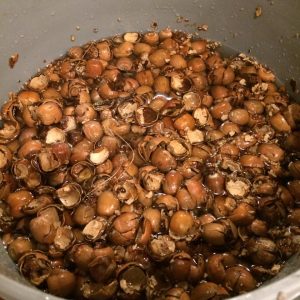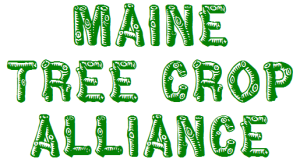The Acornucopia Project , an Ashville, N.C.-based group dedicated to learning more about using acorns. “There’s plenty to go around and more to be had. — Old squirrel proverb.” Their mission is “to develop perennial based agriculture as an economically viable, environmentally beneficial, and socially dignified human endeavor.” Lots of info about all local tree nuts and their products, including some for sale.
Evolution and Diversification of Oaks . The Morton Arboretum in Lisle, Illinois is conducting ongoing research of the genetic diversity of the over 400 oak species worldwide, compiling a genetic database for the Quercus sp.
Acorns as Food: History, use, recipes, and bibliography (pdf, 32 pages including an extensive 18 page bibliography) by David A. Bainbridge, SIERRA NATURE PRINTS. This is a scholarly but very readable article by someone who has explored the subject of acorn consumption around the planet. He mentions how flour can be found in some Asian markets in CA, including a tofu like product. He also suggests that commercial oil production would be feasible here in the US. Native CA populations were some of the earliest people to practice agroforestry. It appears that traditional agriculture and overgrazing may have corrupted it.
Use of Acorns for Food in California: Past, Present, Future by David Bainbridge. This is similar to the above article, presented in a more attractive way as a web page, with a few additions.
Mighty Wild: Acorns: Eat Some, Plant Some A whole website dedicated to how to gather and use acorns, Mighty Wild, an acorn-based food company, was founded in 2014 by two sisters Aline Copp and Mimi Brown. “Mighty Wild’s purpose is to share with you the knowledge we have acquired about oaks and acorn history, culture, food, and processing.” Mighty Wild makes handmade, artisan products from acorn flour Also: A History of Oaks & Acorns as a Food Source Vimeo video .
The New England Acorn Cooperative , and their Facebook page: The New England Acorn Cooperative
The Way I Collect and Process Acorns by Aaron Parker of Edgewood Nursery in North Falmouth. Includes notes on which acorns to keep and which to discard.
Processing Acorns
by Aaron Parker of Edgewood Nursery in Falmouth, Maine, December 2019
This is a davebilt nut cracker, which i use to crack acorns for easier processing. There are lots of lower tech options that work perfectly well, including 2 rocks, but this is the method I use. In future, I would love there to be a community acorn processing day where everyone could bring their acorns to a central spot to share equipment to process them together, maybe next year.
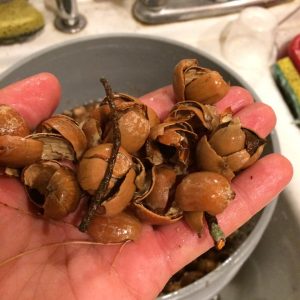
Next I rub the acorns between gloved hands, this helps to free stuck nut meat in the cracked nuts. Then I dump them in a bucket of water.
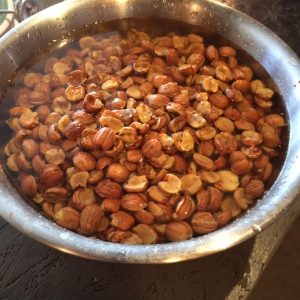
As the nut meats come out of the bucket they need some hand sorting to remove shell fragments that didn’t float off and the occasional spoiled nut meat.
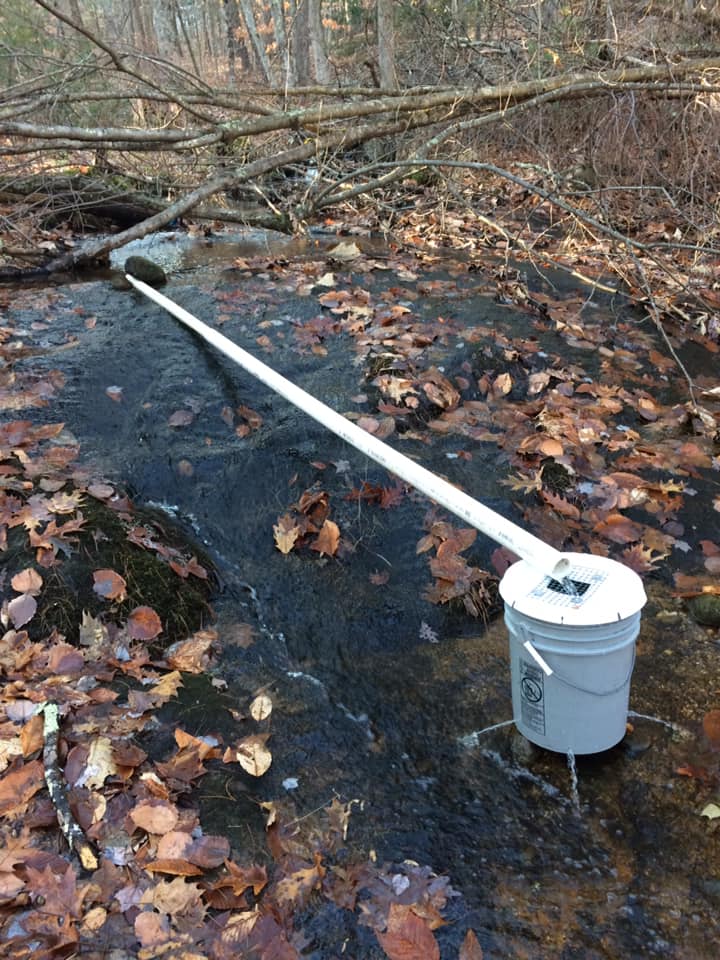
This is my Chris Knapp inspired cold leaching setup, stream water flows through the pipe, into a hole in the lid which is covered in metal mesh, through the bucket of acorns and out holes in the bottom of the bucket. You can get the same job done by putting the nut meat in a bowl of water in the fridge and changing the water frequently. Hot leaching is also a option, but I will describe that in another post.
